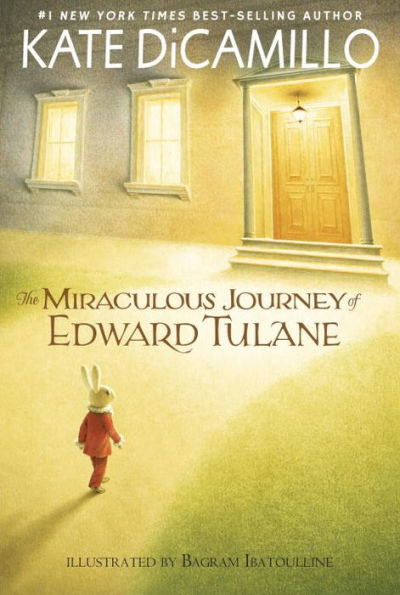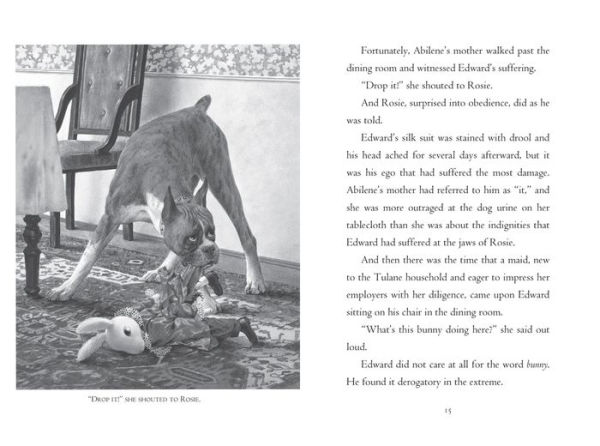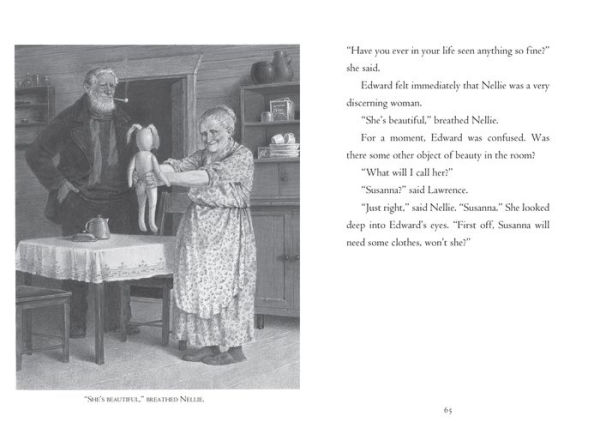Once, in a house on Egypt Street, there lived a china rabbit named Edward Tulane. The rabbit was very pleased with himself, and for good reason: he was owned by a girl named Abilene, who adored him completely. And then, one day, he was lost. . . .
Kate DiCamillo takes us on an extraordinary journey, from the depths of the ocean to the net of a fisherman, from the bedside of an ailing child to the bustling streets of Memphis. Along the way, we are shown a miracle – that even a heart of the most breakable kind can learn to love, to lose, and to love again.
Featuring black-and-white illustrations and a refreshed cover by Bagram Ibatoulline.
Once, in a house on Egypt Street, there lived a china rabbit named Edward Tulane. The rabbit was very pleased with himself, and for good reason: he was owned by a girl named Abilene, who adored him completely. And then, one day, he was lost. . . .
Kate DiCamillo takes us on an extraordinary journey, from the depths of the ocean to the net of a fisherman, from the bedside of an ailing child to the bustling streets of Memphis. Along the way, we are shown a miracle – that even a heart of the most breakable kind can learn to love, to lose, and to love again.
Featuring black-and-white illustrations and a refreshed cover by Bagram Ibatoulline.

The Miraculous Journey of Edward Tulane
240
The Miraculous Journey of Edward Tulane
240Paperback(Reprint)

Product Details
| ISBN-13: | 9780763680909 |
|---|---|
| Publisher: | Candlewick Press |
| Publication date: | 12/08/2015 |
| Edition description: | Reprint |
| Pages: | 240 |
| Sales rank: | 435 |
| Product dimensions: | 5.10(w) x 7.50(h) x 0.70(d) |
| Lexile: | 700L (what's this?) |
| Age Range: | 7 - 10 Years |
About the Author
Customer Reviews
Explore More Items
The sixth book in Erin Hunter’s #1 nationally bestselling Warriors series
Join the legion of fans who have made Erin Hunter’s Warriors series a bestselling phenomenon. More thrilling
Read the books
For generations, four Clans of wild cats have shared the forest according to the laws laid down by their warrior ancestors. But the ThunderClan cats are in grave
"Forgiveness, light, love, and soup. These essential ingredients combine into a tale that is as soul-stirring as it is delicious." — BOOKLIST (starred review)
Welcome to the story of
Mercy's appetite has got her into trouble again. When Eugenia Lincoln's pansies
Whether exploring the wonders of the state fair, attempting to set a world record, or just
Deckawoo Drive’s intrepid animal control officer meets her match—or does she? A funny, heartfelt, and fast-paced romp from Kate DiCamillo.
Francine Poulet is the greatest animal control
Newbery Medalist Kate DiCamillo returns to her roots in this 2016 National Book Award Finalist — a moving, masterful story of
The first three tales of Kate DiCamillo’s hilarious and heartfelt Deckawoo Drive series are collected in a convenient, affordable bind-up.
Dive into a spin-off series starring favorite
From two-time Newbery Medalist Kate DiCamillo and two-time Caldecott Medalist Sophie Blackall comes a fantastical meditation on fate, love, and the power of words to
“Guaranteed to enchant young readers. This collaboration by two masters of their craft—a Newbery Medalist and a Governor General’s Literary Award







